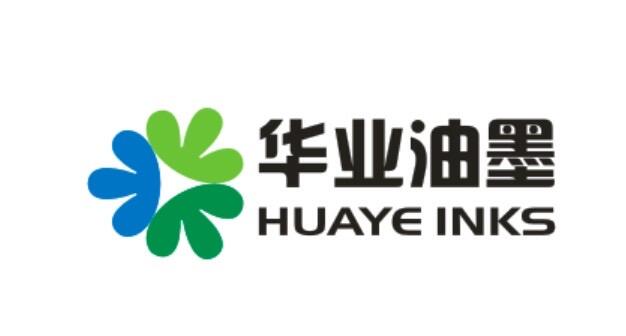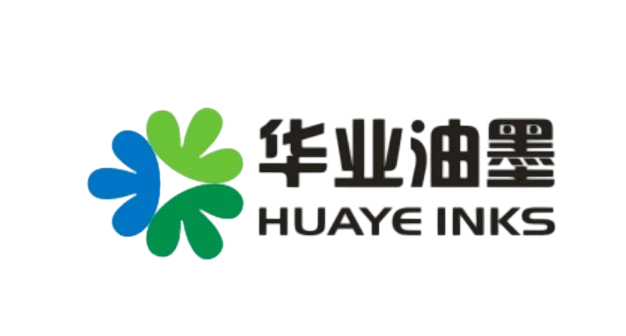Fast-Drying Properties and Their Impact on High-Speed Flexo Printing
How Solvent-Based Flexo Inks Dry Quickly to Match High Press Speeds
For those working with high speed plastic packaging printing, solvent based flexo inks tend to be what most people reach for because they dry so quickly. These inks contain solvents that have low boiling points such as ethanol or acetone. They basically disappear when heated to around 40 to 60 degrees Celsius, leaving behind printed images on polyethylene films within half a second flat. The quick drying time means printers can run at incredible speeds over 1000 feet per minute without worrying about smudged prints. And this matters a lot in flexible packaging operations where production lines need to keep moving non stop from start to finish.
UV-Curable and LED-Cured Flexo Inks: Instant Curing for Continuous Printing
UV curable inks get rid of those annoying drying times because they work through a process called photopolymerization. These inks actually cure in under 0.1 seconds once hit with UV light between 300 and 400 nanometers. The newer LED versions are way better for energy use too, cutting down power needs around 85 percent compared to old school mercury vapor lamps that everyone used before. Recent improvements in LED arrays have made it possible to control specific wavelengths during curing. This helps keep materials intact especially important for those fancy multi layer barrier films. Plus manufacturers can run their lines at impressive speeds reaching up to 1500 feet per minute without damaging anything.
Drying Mechanisms on Non-Porous Plastic Films: Evaporation, Absorption, and Radiation Curing
Modern flexo presses use a hybrid approach to dry inks on non-porous substrates:
- Evaporation: Forced hot air (80–120°C) removes surface solvents
- Absorption: Corona-treated films allow partial ink penetration via specialized resins
- Radiation: UV/EB systems crosslink polymers instantly without heat
This combination prevents ink offsetting and ensures compatibility across materials like BOPP and PET.
Optimizing Solvent Selection for Efficient Drying and Web Performance
Press operators select solvents based on drying speed, emissions, and thermal sensitivity:
| Factor | Fast Evaporation | Slow Evaporation |
|---|---|---|
| Drying Speed | 0.3–0.8 seconds | 1.2–2.5 seconds |
| VOC Emissions | 35–50 g/m² | 15–25 g/m² |
| Substrate Distortion Risk | High (>80°C) | Low (>60°C) |
Azeotropic solvent blends now deliver 40% faster drying with 30% lower emissions than single-solvent systems, improving both performance and environmental compliance.
Water-Based vs. Solvent-Based Flexo Inks: Trade-Offs in Drying Speed and Sustainability
Water based inks cut VOC emissions down around 85 percent, which is great for the environment. However, these inks take longer to dry because water has such a high latent heat of vaporization. The drying time usually ranges from 1.2 to 2 seconds. But there's new stuff coming out called nanoemulsion technology that's changing things. Some pilot tests have shown water based inks can now dry in just 0.8 seconds on LDPE surfaces when heated to 90 degrees Celsius. Pretty impressive right? There's a catch though. These newer methods cost about 15 to 20 percent more in energy than traditional solvent based alternatives. Still, many manufacturers are willing to pay the extra for the environmental benefits.
Strong Adhesion to Low-Energy Plastic Substrates
Overcoming Surface Energy Challenges in Polyolefins and PET Films
Polyolefins like PE and PP have surface energies below 34 dynes/cm², limiting ink wetting. Modern flexo inks overcome this using polar resins and surface-activating additives that reduce interfacial tension. For PET, ester-based solvents slightly etch the surface, promoting uniform laydown at speeds over 600 fpm.
Resin Formulation Strategies for Enhanced Flexo Ink Adhesion
Acrylic and nitrocellulose resins remain dominant for their balance of adhesion and processability. Hybrid systems combining polyurethane dispersions with chlorinated polyolefins have demonstrated a 42% improvement in peel strength on untreated polypropylene. Key formulation factors include:
- Glass transition temperature (Tg) aligned with substrate flexibility
- Controlled molecular weight for interlayer penetration
- Reactive sites enabling covalent bonding with treated surfaces
Surface Treatments and Adhesion Promoters in Plastic Packaging Printing
When applying flame treatment at around 10 to 12 kilowatts per square meter, it boosts the surface energy levels of those big format polypropylene films beyond 45 dynes per centimeter squared. For better adhesion, chemical primers work wonders too. These often contain stuff like chlorinated polymers or silanes, which stick particularly well to recycled PET materials that have those slippery additives mixed in. There's also been some exciting developments lately with bio-based promoters made from modified lignin. They're actually holding their own against traditional petrochemical options when it comes to bond strength, making them pretty good sustainable choices for companies working on flexible packaging solutions these days.
Corona and Plasma Treatment: Preparing Substrates for Optimal Flexo Ink Bonding
Atmospheric plasma creates those reactive molecules like ozone and nitrogen oxides that actually change polymer surfaces so they bond directly with ink, eliminating the need for solvents altogether. When we apply around half to three quarters of a kilojoule per square meter, low density polyethylene goes from having just 31 dynes per centimeter surface energy all the way up to 58 dynes per cm. That makes ink stick three times better according to standard ASTM D5264 testing methods for rubbing resistance. Pretty impressive stuff. What's even cooler is how this works great on production lines running at speeds as high as 1200 feet per minute during reel to reel processing. No slowdown needed for quality results.
Precision Viscosity and Rheology Control for Consistent Ink Transfer
Ideal viscosity ranges for solvent-based and UV flexo inks
Solvent-based flexo inks perform best at 30–70 poise, while UV-curable formulations operate within 50–150 poise to balance flow and curing. Maintaining tight viscosity control (±5 poise) minimizes dot gain in halftones and ensures color consistency. Advanced rheometers measure shear stress at production-relevant rates (100–500 s⁻¹), aligning lab results with real-world press conditions.
Shear-thinning behavior and its role in high-speed anilox ink delivery
Flexo inks today have this interesting property called thixotropy where their viscosity actually drops between 30 to 60 percent when subjected to the intense shear forces (around 3,000 to 5,000 seconds inverse) from those anilox rollers. What's neat is how they recover so fast after that, which helps stop the ink from flooding everywhere. The result? Much better control over metering into those 1200 LPI cells. We're talking about ink films that form at less than 4 microns thickness, something that really matters for print quality. And even at impressive speeds exceeding 600 feet per minute, these inks resist misting issues that can plague other systems. Looking at industry numbers, companies using shear optimized inks report roughly an 18 percent reduction in waste thanks to their consistently good transfer performance across different printing conditions.
Low ink film thickness requirements in modern narrow-web flexo presses
Narrow-web converters target 1.2–2.8 µm ink films to achieve over 95% opacity on OPP without blocking. Inks with controlled viscoelasticity (tan δ = 0.3–0.7) work efficiently with 2–3 BCM anilox rolls, cutting ink usage by 22–35% compared to conventional formulations.
Automated viscosity monitoring systems for stable high-speed production
Real-time viscometers with ±0.5 poise accuracy dynamically adjust solvent ratios during runs, keeping rheology within ±3% of target. Integrated systems flag deviations when thixotropic recovery exceeds 45 seconds—a critical early warning for print defects in operations exceeding 400 meters per minute.
Durability and Regulatory Compliance in Flexible Packaging Applications
Modern flexo inks must endure mechanical stress and meet strict safety standards, all while delivering vibrant graphics. Converters face the dual challenge of ensuring durability through distribution and complying with global regulations.
Resistance to Abrasion, Moisture, and Transport Stress in Printed Films
High-performance flexo inks use flexible resins to maintain adhesion during repeated flexing, achieving over 90% abrasion resistance in ASTM D5264 testing. UV-cured inks form crosslinked networks that provide moisture barriers below 0.5 g/m²/day WVTR—critical for protecting perishable goods.
Low-Migration UV Flexo Inks for Food-Safe and Pharmaceutical Packaging
Advanced photoinitiator systems reduce residual monomers to less than 0.01 ppm, meeting FDA 2023 migration limits for indirect food contact. Dual-cure technologies enable 100% solids formulations, eliminating solvent residues while maintaining ultra-thin print layers under 2 μm.
Meeting Global Regulatory Standards While Maintaining Print Quality
EU MDR updates now require full material declarations covering more than 1,600 substances, driving transparency in ink supply chains. Color-matching systems integrate regulatory databases to ensure Pantone accuracy while avoiding restricted pigments such as CI Pigment Violet 23.
Balancing Durability With Sustainability and Recyclability Demands
Next-generation inks achieve performance and sustainability through:
- Water-based acrylics with <5% VOC content
- Deinking-compatible chemistries enabling 85% PET film recyclability
- Renewable resin matrices retaining 98% adhesion after six months of aging
These innovations help converters meet EPREL recycling targets without compromising shelf appeal—especially important as 78% of consumers factor recyclability into purchasing decisions (GreenPackage 2023).
FAQ
What are solvent-based flexo inks?
Solvent-based flexo inks are printing inks that contain solvents like ethanol or acetone. These solvents have low boiling points and evaporate quickly when heated, allowing for fast drying and high-speed printing.
How do UV-curable inks differ from traditional inks?
UV-curable inks undergo photopolymerization when exposed to UV light, allowing them to cure instantly. They provide energy-efficient printing options and are versatile for use on various substrates.
What role do surface treatments play in flexo printing?
Surface treatments, like corona and plasma treatments, modify polymer surfaces to enhance the bonding of flexo inks. This improves adhesion and print quality, particularly on substrates with low surface energy.
Why is viscosity control important in flexo printing?
Viscosity control is crucial in flexo printing to ensure consistent ink transfer, minimize dot gain, and maintain color accuracy. It helps in achieving optimal print quality at high speeds.
What are the environmental benefits of water-based flexo inks?
Water-based flexo inks significantly reduce VOC emissions, making them environmentally friendly options. Innovations like nanoemulsion technology offer faster drying times while maintaining sustainability.
Table of Contents
-
Fast-Drying Properties and Their Impact on High-Speed Flexo Printing
- How Solvent-Based Flexo Inks Dry Quickly to Match High Press Speeds
- UV-Curable and LED-Cured Flexo Inks: Instant Curing for Continuous Printing
- Drying Mechanisms on Non-Porous Plastic Films: Evaporation, Absorption, and Radiation Curing
- Optimizing Solvent Selection for Efficient Drying and Web Performance
- Water-Based vs. Solvent-Based Flexo Inks: Trade-Offs in Drying Speed and Sustainability
- Strong Adhesion to Low-Energy Plastic Substrates
- Precision Viscosity and Rheology Control for Consistent Ink Transfer
- Durability and Regulatory Compliance in Flexible Packaging Applications



